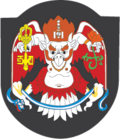Ulan Bator
| Ulan Bator | ||||||||
|
||||||||
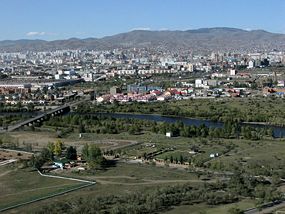 |
||||||||
|
||||||||
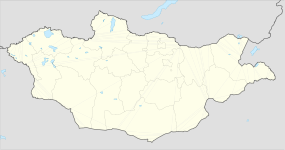 Ulan Bator
|
||||||||
| Coordinates: | ||||||||
|---|---|---|---|---|---|---|---|---|
| Established as Örgöö | 1639 | |||||||
| current location | 1778 | |||||||
| Ulaanbaatar | 1924 | |||||||
| Area | ||||||||
| - Total | 4,704.4 km² (1,816.3 sq mi) | |||||||
| Elevation | 1,350 m (4,429 ft) | |||||||
| Population (31.05.2008)[1] | ||||||||
| - Total | 1,044,500 | |||||||
| - Density | 222/km² (575/sq mi) | |||||||
| Time zone | H (UTC+8) | |||||||
| Postal code | 210 xxx | |||||||
| Area code(s) | +976 (0)11 | |||||||
| License plate | УБ_ (_ variable) | |||||||
| ISO 3166-2 | MN-1 | |||||||
| Website: http://www.ulaanbaatar.mn/ | ||||||||
Ulan Bator, or Ulaanbaatar (Mongolian: Улаанбаатар), is the capital and largest city of Mongolia. The city is an independent municipality not part of any province, and its population as of 2008 is just over 1 million.[1]
Located in the north central part of the country, the city lies at an elevation of about 1310 m in a valley on the Tuul River. It is the cultural, industrial, and financial heart of the country. It is a transport center, connected by highway to all the major towns in Mongolia and by rail to the Trans-Siberian Railway and Chinese railroad network.[2]
The city was founded in 1639 as a Buddhist monastic centre and, in the 20th century, grew into a major manufacturing centre defined by its broad boulevards and squares and Socialist Classicist-style buildings.[2]
Contents |
Names
Ulan Bator has had numerous names in its history. From 1639–1706, it was known as Örgöö (Mongolian: Өргөө, residence), and from 1706–1911 as Ikh Khüree (Mongolian: Их = "great", Хүрээ = "camp"), Da Khüree or simply Khüree. Upon independence in 1911, with both the secular government and the Bogd Khan's palace present, the city's name changed to Niislel Khüree (Mongolian: Нийслэл = "capital", Хүрээ = "camp").
When the city became the capital of the new Mongolian People's Republic in 1924, its name was changed to Ulaanbaatar (Улаанбаатар, classical script: ![]() , Ulaɣan Baɣatur), literally "red hero"), in honor of Mongolia's national hero Damdin Sükhbaatar, whose warriors liberated Mongolia from Ungern von Sternberg's troops and Chinese occupation shoulder-to-shoulder with the Soviet Red Army. His statue still adorns Ulan Bator's central square.
, Ulaɣan Baɣatur), literally "red hero"), in honor of Mongolia's national hero Damdin Sükhbaatar, whose warriors liberated Mongolia from Ungern von Sternberg's troops and Chinese occupation shoulder-to-shoulder with the Soviet Red Army. His statue still adorns Ulan Bator's central square.
In Europe and North America, Ulan Bator was generally known as Urga (from Örgöö) or sometimes Kuren (from Khüree) or Kulun (from 庫倫, the Chinese transcription of Khüree) before 1924, and Ulan Bator afterwards, after the Russian: Улан-Батор. The Russian spelling is different from the Mongolian because it was defined phonetically, and the Cyrillic script was only introduced in Mongolia seventeen years later.
History
Red ochre rock paintings from the Bronze Age (3000 years ago) are to be found on the north side of Mt. Bogd Khan Uul facing the city. The paintings show human figures, horses, eagles and abstract designs like horizontal lines and large squares with over a hundred dots within them. The same style of painting from the same era is found very close to the west of the city at Gachuurt, as well as in Khovsgol Aimag and southern Siberia, indicating a common South Siberian nomadic hunter-gatherer culture. Mt. Bogd Khan Uul was probably an important religious cult location for these people.
To the north of Ulan Bator there are the vast Noin-Ula Xiongnu burial sites which are over 2000 years old. The area of Ulan Bator was well within the sphere of nomadic empires such as the Xiongnu, Xianbei, Rouran, Gokturk, Uighur, Khitan and Mongol Empire.
At Nalaikh District there is the important Stele of Tonyukuk (c. 697 AD) inscribed with Turkic Rune script. The inscription is lengthy and it is worth noting that here one can find mentions of a people called "Khitans" who were a Mongolic speaking people of the east.
Wang Khan Toghrul of the Kerait is said to have had his palace here (the Black Forest of the Tuul River) and forbade hunting in the holy mountain Bogd Uul. The ruins of his palace has been found near the city. A simple 13th century rock painting of a Mongolian woman with distinct Mongolian headdress can be seen on the north side of Mt. Bogd Uul. Abtai Sain Khan is said to have worshipped the mountain in the 16th century as well.
Founded in 1639 as a yurt monastery, Ulan Bator, then Örgöö (palace-yurt), was first located at the lake Shireet Tsagaan nuur in what is now Övörkhangai, around 250 km from the present site of Ulan Bator, and was mainly intended to be the seat of the first Jebtsundamba Khutughtu, Zanabazar.
As a mobile monastery-town, it was often moved to various places along the Selenge, Orkhon and Tuul rivers, as supply and other needs would demand. During the Dzungar wars of the late 17th century, it was even moved to Inner Mongolia.[3] As the city grew, it moved less and less.[4] In 1778, the city settled for good at its current location, near the confluence of the Selbe and Tuul rivers and beneath Bogd Khan Uul, back then also on the caravan route from Beijing to Kyakhta.[5] The city became the seat not only of the Jebtsundamba Khutugtus, but also of two Qing ambans, and a Chinese trade town (traditional Chinese: 買賣城; pinyin: Măimàichéng) grew several kilometers east of the city center. Since 1778 Urga had more than 10,000 monks. They were regulated by a monastic rule called the Internal Rule of the Grand Monastery or Yeke Kuriyen-u Doto'adu Durem (for example, in 1797 or the second year of Jiaqing a decree of the 4th Jebtsundamba forbade "singing, playing with archery, myagman, chess, usury and smoking"). Urga was visited by Abbe Joseph Gabet, Abbe Huc, Przhevalsky, Pyotr Kozlov and Pozdneev. In 1863 the Russian Consulate of Urga was opened in a newly built two-storey building. A small onion-domed Chapel of the Holy Trinity was opened the same year.
In 1911, Mongolian leaders in Ikh Khüree for Naadam met in secret and resolved upon independence from China for their country. On December 29, 1911, the Bogd Khan was declared ruler of an independent Mongolia.[4] Khüree as the seat of the Jebtsundamba Khutugtu was the logical choice for the capital of the new state. In 1919, it was occupied by Chinese troops, and in 1921 changed hands twice, first to Baron Ungern's Whites Soldateska, and in July to the Soviet-supported Mongolian troops led by Sükhbaatar. On October 29, 1924, the town was renamed to Ulaanbaatar ("red hero") as reference to Sükhbaatar, who had died earlier that year.[4]
In the socialist period, and especially following the Second World War, most of the old yurt quarters were replaced by Soviet-style blocks of flats, often financed by the Soviet Union. The Transmongolian Railway, connecting Ulan Bator with Moscow and Beijing, was completed in 1956, and cinemas, theatres, museums etc. were erected. On the other hand, many of the temples and monasteries of pre-socialist Khüree were destroyed following the anti-religious purges of the late 1930s.
Ulan Bator was the site of demonstrations that led to Mongolia's transition to democracy and a market economy in 1990. A December 10, 1989 protest outside the Youth Culture Centre called for Mongolia to implement perestroika and glasnost in their full sense. Dissident leaders demanded free elections and economic reform. On January 14, 1990, the protesters, having grown from two hundred to some 1,000, met at the Lenin Museum in Ulan Bator. A demonstration in Sukhbaatar Square on Jan. 21 (in weather of -30 C) followed. After came weekend demonstrations in January and February and the forming of Mongolia's first opposition parties. On March 7 ten dissidents assembled in Sukhbaatar Square and went on hunger strike. Thousands of supporters joined them. More came on March 8, and the crowd grew more unruly; seventy people were injured and one killed. On March 9 the Communist MPRP government resigned. The new government announced Mongolia's first free elections, which were held in July. (Ironically, the Communist government won the election by a wide margin.)[6]
Since Mongolia's transition to market economy in 1990, the city has experienced further growth - especially in the yurt quarters, as construction of new blocks of flats had basically broken down in the 1990s - and population has doubled to now one million inhabitants, about 40% of Mongolia's entire population. This causes a number of social, environmental, and transportation problems. In recent years, construction of new buildings has gained new momentum, especially in the city center, and flat prices have skyrocketed.
In 2008, Ulaanbaatar was the scene of riots after the opposition Mongolian Democratic Party protested its defeat by the MPRP in parliamentary elections. Protesters set the MPRP's headquarters on fire, and five people were killed.
Administration and subdivisions
Ulan Bator is divided into nine districts (Düüregs): Baganuur, Bagakhangai, Bayangol, Bayanzürkh, Chingeltei, Khan Uul, Nalaikh, Songino Khairkhan, and Sükhbaatar. Each district is subdivided into Khoroos.
The capital is governed by a city council (the Citizen's Representatives Hural) with forty members, elected every four years. The city council appoints the mayor. The current mayor is Tüdeviin Bilegt[7]. Ulan Bator is governed as an independent first-level subdivision of Mongolia, separate from Töv Aimag, the province that surrounds Ulan Bator.
The city consists of a central district built in Soviet 1940s and 1950s-style architecture, surrounded by and mingled with residential concrete towerblocks and large yurt quarters. In recent years, a lot of the towerblock's ground floors have been modified and upgraded to small shops, and many new buildings have been erected, some of them illegally.
Transportation

Interurban and international: Ulan Bator is served by the Chinggis Khaan International Airport (formerly Buyant Ukhaa Airport). It is 18 km southwest of the city.[8] Chinggis Khaan airport is the only airport in Mongolia that offers international flights. Flights to Ulan Bator are available from Tokyo, Seoul, Berlin, Moscow, Irkutsk, and Beijing.[9] Ulan Bator is connected by road to most of the major towns in Mongolia, but most roads in Mongolia are unpaved and unmarked and road travel can be difficult. Even within the city, not all roads are paved and some of the ones that are paved are not in good condition.[10]There are rail connections to the Trans-Siberian railway via Naushki and to the Chinese railroad system via Jining.
Intra-urban: The national and municipal governments regulate a wide system of private transit providers which operate numerous bus lines around the city. A secondary transit system of microbuses (passenger vans) operates alongside these bus lines.
Education
Ulan Bator has six major universities: the National University of Mongolia, Science and Technological University of Mongolia, Mongolian State University of Agriculture, University of Health and Medical Science, Pedagogical University, and University of Art and Culture. The National Library of Mongolia has a wide selection of English-language texts on Mongolian subjects.[11] The American School of Ulaanbaatar and the International School of Ulaanbaatar both offer Western-style K-12 education in English for Mongolian nationals and foreign residents.[12][13]
Sights

Few buildings in Ulaanbaatar predate World War II. Pre-World War II buildings that survive include: Dambadarjaalin monastery in Sukhbaatar District (1765), Dashchoilin monastery's large ger chapels (built in 1778), Gandan monastery's golden-roofed Gandantegchinlen temple also called the Tsogchin dugan (1838), Vajradhara temple (1841), Zuu temple (1869), Didan Laviran temple (19th century), Erdem Itgemjit temple (1893) at the Bogd Khan's Winter Palace, rest of the buildings at the same Palace (1893-1906), the Museum of Ulaanbaatar's History which was formerly the private residence of the rich Buryat merchant Tsogt Badamjav (1904), Zanabazar's Art Museum building which was formerly called the Ondor Khorshoo (1905), the tall Megjid Janraisig temple (1913-1914), the residence of Chin Van Khanddorj, a prominent noble and politician in the early years of Mongolia's independence (1913), the first telephone building where Russian Orthodox choir singers stayed (1914) etc. The building of the Teacher's College was originally the government headquarters and dates from 1930. Prime Minister Genden's residence was built in 1930. Another one is the Choijin Lama Monastery, a Buddhist monastery that was completed in 1908. It escaped the destruction of Mongolian monasteries when it was turned into a museum in 1942.[14] The Gandantegchinlen Khiid Monastery, which dates to the 19th century. Its most famous attraction is a 26.5-meter-high golden statue of Migjid Janraisig.[15] These monasteries are among the very few in Mongolia to escape the wholesale destruction of Mongolian monasteries under Khorloogiin Choibalsan.
Ulaanbaatar has several museums dedicated to Mongolian history and culture. The Natural History Museum features many dinosaur fossils and meteorites found in Mongolia.[16][17] The National Museum of Mongolian History includes exhibits from prehistoric times through the Mongol Empire to the present day.[18][19] The Zanabazar Museum of Fine Arts contains a large collection of Mongolian art, including works of the 17th century sculptor/artist Zanabazar, as well as Mongolia's most famous painting, One Day In Mongolia by B. Sharav.[20][21]
The Winter Palace of the Bogd Khan remains as a museum of the last king of Mongolia (reigned from 1911-1924). The complex includes six temples as well as many of the Khan's possessions, such as his throne and bed, his collection of art and stuffed animals, his ornate ceremonial ger, and a pair of ceremonial boots given to the Khan by Russian Tsar Nicholas II.[22][23]
The Ulaanbaatar Opera House hosts concerts and musical performances.
Sükhbaatar Square, in the government district, is the center of Ulaanbaatar. In the middle of Sükhbaatar Square, there is a statue of Damdin Sükhbaatar on horseback. The spot was chosen because that was where Sukhbaatar's horse had peed (a good omen) on July 8th, 1921 during a gathering of the Red Army. On the north side of Sükhbaatar Square is the Mongolian Parliament building, featuring a large statue of Chinggis Khan at the top of the front steps. Peace Avenue (Enkh Taivny Örgön Chölöö), the main thoroughfare through town, runs along the south side of the square.[24]
The Zaisan Memorial, a memorial to Russian soldiers killed in World War II, sits on a hill south of the city. The Zaisan Memorial includes a Russian tank paid for by the Mongolian people and a circular memorial painting which depicts scenes of friendship between the peoples of Russia and Mongolia. Visitors who make the long climb to the top are rewarded with a panoramic view of the whole city down in the valley.
National Sports Stadium is the main sporting venue. The Naadam festival is held here every July.
Gorkhi-Terelj National Park, a nature preserve with many tourist facilities, is approximately 70 km from Ulan Bator. Accessible via paved road.
Pre-1778 artifacts that never left the city since its founding include the Vajradhara statue made by Zanabazar himself in 1683 (the city's main deity kept at the Vajradhara temple), a highly ornate throne presented to Zanabazar by the Kangxi Emperor (before 1723), a sandalwood hat presented to Zanabazar by the Dalai Lama (c. 1663), Zanabazar's large fur coat which was also presented by the Kangxi Emperor and a great number of original statues made by Zanabazar himself (e.g. the Green Tara).
Symbols
The official symbol of Ulan Bator is the garuḍa, a mythical bird in both Buddhist and Hindu scriptures called Khan Garuda or Khangar'd (Mongolian: Хангарьд) by Mongols.
Coat of arms
The garuḍa appears on Ulan Bator's coat of arms. In its right hand is a key, a symbol of prosperity and openness, and in its left is a lotus flower, a symbol of peace, equality, and purity. In its talons it is holding a snake, a symbol of evil of which it is intolerant. On the garuḍa's forehead is the soyombo symbol, which is featured on the flag of Mongolia.
Flag
The city’s flag is sky blue with the garuḍa arms in the center.
Geography and Climate
Ulan Bator is located at about 1350 meters (4430 ft) above sea level, slightly east of the center of Mongolia on the Tuul River, a subtributary of the Selenge, in a valley at the foot of the mountain Bogd Khan Uul.
Due to its high elevation, relatively high latitude, and location hundreds of kilometres from any coast, Ulan Bator is the coldest national capital in the world, with a monsoon-influenced subarctic climate (Koppen climate classification Dwc) with brief, warm summers and long, very cold and dry winters. Precipitation is heavily concentrated in the warmer months. It has an average annual temperature of -1.3 °C (29.7 °F). The city lies in the zone of sporadic permafrost, which means that building is difficult in sheltered aspects that preclude thawing in the summer, but easier on more exposed ones where soils fully thaw. Suburban residents live in traditional gers that do not protrude into the soil.[25]
| Month | Jan | Feb | Mar | Apr | May | Jun | Jul | Aug | Sep | Oct | Nov | Dec | |
|---|---|---|---|---|---|---|---|---|---|---|---|---|---|
| Average high °C (°F) | -16 (3) |
-10 (14) |
-1 (30) |
8 (46) |
17 (63) |
22 (72) |
24 (75) |
22 (72) |
16 (61) |
7 (45) |
-6 (21) |
-14 (7) |
|
| Average low °C (°F) | -26 (-15) |
-22 (-8) |
-14 (7) |
-4 (25) |
3 (37) |
10 (50) |
12 (54) |
10 (50) |
3 (37) |
-5 (23) |
-16 (3) |
-23 (-9) |
|
| Precipitation mm (inches) | 1.9 (0.07) |
1.9 (0.07) |
2.8 (0.11) |
6.4 (0.25) |
14.6 (0.57) |
36.7 (1.44) |
46.5 (1.83) |
46.1 (1.81) |
22.6 (0.89) |
5.3 (0.21) |
4.8 (0.19) |
3.5 (0.14) |
|
| Source: Foreca[26] 2008 | |||||||||||||
Sister cities

According to the city's official website[27]:
 Seoul, South Korea
Seoul, South Korea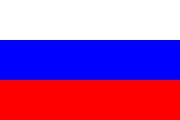 Irkutsk, Russian Federation
Irkutsk, Russian Federation Moscow, Russian Federation
Moscow, Russian Federation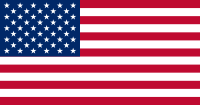 Denver, Colorado, USA[28]
Denver, Colorado, USA[28]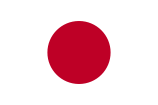 Sapporo, Japan
Sapporo, Japan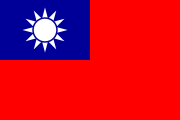 Taipei, Taiwan
Taipei, Taiwan Hohhot, People's Republic of China
Hohhot, People's Republic of China
See also
- Architecture of Mongolia
- List of historical cities and towns of Mongolia
References
- This article incorporates text from the Encyclopædia Britannica Eleventh Edition, a publication now in the public domain.
- Kohn, Michael. Lonely Planet Mongolia. 4th edition, 2005. ISBN 1740593596
- ↑ 1.0 1.1 Ulan Bator Statistic Bulletin May.2008 http://statis.ub.gov.mn/index.php?option=com_docman&task=doc_download&gid=170&Itemid=99999999
- ↑ 2.0 2.1 Ulan Bator Official Web Portal
- ↑ This Shireet tsagaan nuur is located in Övörkhangai's Bürd sum. P. Enkhbat, O. Pürev, Улаанбаатар, Ulaanbaatar 2001, p. 9f
- ↑ 4.0 4.1 4.2 Brief history of Ulaanbaatar
- ↑ Kohn, p. 52
- ↑ Rossabi, Morris. Modern Mongolia: From Khans to Commissars to Capitalists. 2005, University of California Press, ISBN 0520244192. pp. 1-28
- ↑ Official website of the mayor of Ulan Bator
- ↑ Kohn, p. 88
- ↑ MIAT Route Map
- ↑ Transport in Mongolia
- ↑ Kohn, pp. 54-5
- ↑ American School of Ulaanbaatar
- ↑ International School of Ulaanbaatar
- ↑ Choijin Lama Monastery
- ↑ Kohn, pp. 63-4
- ↑ Natural History Museum
- ↑ Kohn, p. 60
- ↑ Kohn, pp. 61, 66
- ↑ National Museum
- ↑ Kohn, p. 61
- ↑ Zanazabar Museum of Fine Arts
- ↑ Museums to Highlight
- ↑ Kohn, p. 63
- ↑ Kohn, p. 52
- ↑ geography.about.com coldcapital.html
- ↑ You must specify title = and url = when using {{cite web}}."". Foreca. Retrieved on 2008-09-14.
- ↑ Ulaanbaatar.mn: Улаанбаатар хотын ах, дүү хотууд
- ↑ Denver Sister Cities
External links
- Digital map of Ulan Bator ger districts including (English)
- "Urga or Da Khuree" from A. M. Pozdneyev's Mongolia and the Mongols
- Ulan Bator travel guide from Wikitravel
|
||||||||||

